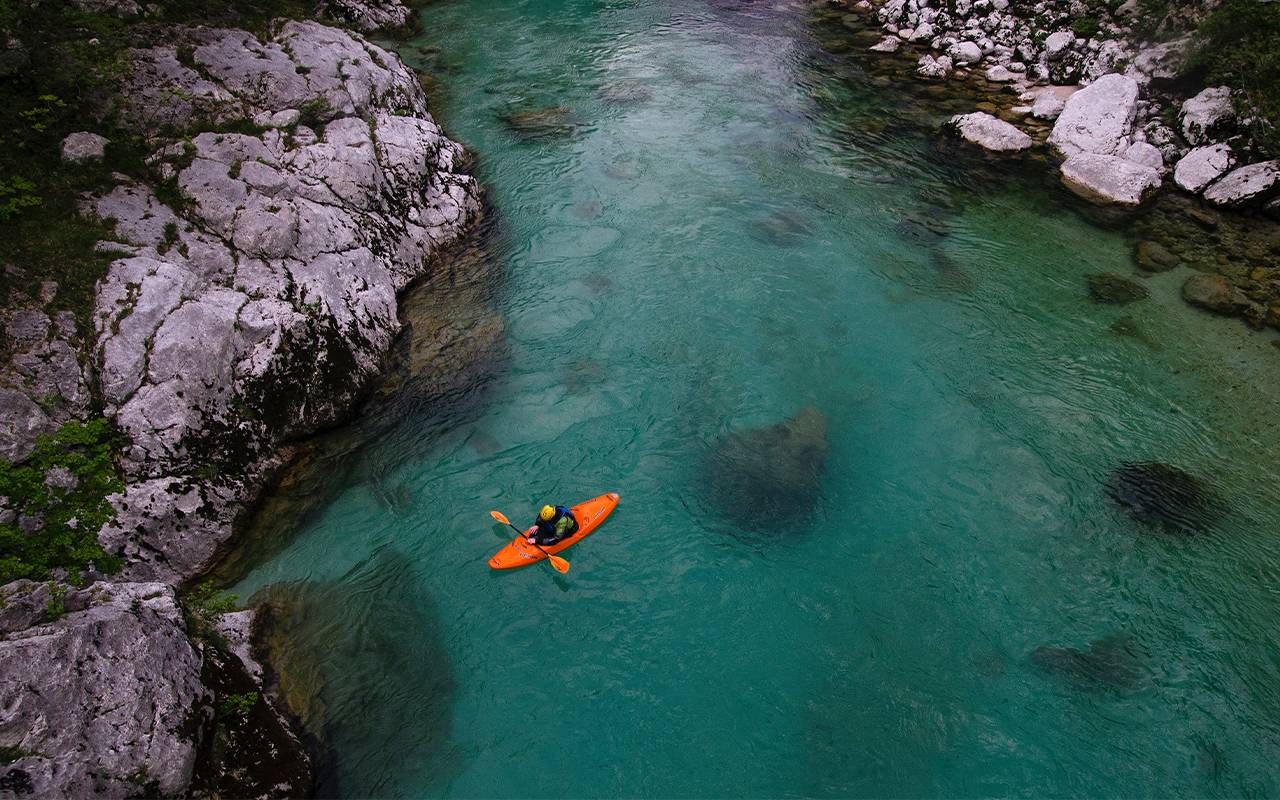Google Maps: My New Favorite Everyday Tool
Using Google Maps helps me find minor adventures — and fuels unexpected joy
The water rippled beneath my kayak, the boat gently rising and falling against the current. I sat, paddle across my lap, watching as a great blue heron glided in for a landing along the shore. Around the perimeter of the lake, the leaves shivered on the breeze, a whispered rattle that spread from one tree to the next.
I inhaled the clean air, and felt the sun tap my cheekbones. I'd never known this body of water, only 6 miles from my home, existed until I'd looked for my next "minor adventure" using one of my favorite everyday tools: Google Maps.

Seeking out new experiences, even small ones, makes us stronger and happier, say scientists. While studies have supported this theory for years, more recent investigations have linked slow adventure and mental well-being. The effect is especially powerful when paired with physical activity of any intensity, and may even rebuild pathways in the brain. The mindful enjoyment of new experiences, particularly outdoors, can encourage a state of mental and physical equilibrium.
Simply by zooming in and panning around, you can find a variety of new-to-you sights and experiences that rarely make the cut into travel guides.
"It 'tickles' the brain in all the best ways," says Julie Fast, adventure specialist with Adventures in Good Company. "We can get so stuck in our patterns where we do A, B, C every single day, and take X, Y, Z route to do it. Being open to discovering new things is a nice way to fill yourself with awe and wonder. Those feelings reset your gratitude metric."
Google Maps is pretty brilliant at pinpointing lesser-known places and attractions that can break us out of those patterns. Simply by zooming in and panning around, you can find a variety of new-to-you sights and experiences that rarely make the cut into travel guides. The app employs a range of symbols to categorize locations, from a knife and fork for restaurants to an obelisk for monuments and a castle (or chess rook) for historic sites, for at-a-glance reference.
For years, Google Maps has allowed us to visit famous locations and curiosities, especially those in restricted access, such as alien-lore-rich Area 51 in Nevada, or Pripyat, the Ukrainian city abandoned following the Chernobyl nuclear disaster. Such armchair adventures are stimulating, but pale in comparison to the hands- or feet-on experience of visiting someplace new. Whether I'm heading out for a haircut or a vacation, I fire up Google Maps, zoom into the location, and find out what's in the area. Then I tack on a little extra time to see something novel and often surprising.
Using Maps, I've visited a blink-and-you'll-miss-it sculpted fountain that honors the indigenous people who settled the Hudson Valley town next to mine. On the way to the doctor's, I've stopped to view sandstone footprints left by herds of dinosaurs that roamed Western Massachusetts 200 million years ago. During a family vacation in Soria, Spain, while everyone else was napping back at our Airbnb, I used Maps to find minor adventure. Past a medieval church in the village, I located a scenic and little-visited waterfall, accessed via a fairy tale-esque gate in the woods.
Take Time to Recharge
Similarly, Fast, who is fascinated with architecture and tiny homes, uses image mode on Google Maps to find interesting examples near her. She then makes the time to visit by car, bike, or foot, and appreciate what she sees.
"If you can fill your free time with self-care and intentional activities, you're going to knock it out of the park healthwise."
In my case, the activity is usually brief — no more than an hour, and sometimes as quick as 10 minutes — and represents a detour of a few miles or less off my planned route.
That's enough to recharge us, says Matthew Schubert, a mental health counselor in Boise, Idaho. "It's about being intentional," he says. "If you can fill your free time with self-care and intentional activities, you're going to knock it out of the park healthwise. Whether it's an hour a week or 10 minutes one day, carving out this time is more important than we think, especially when we're busy."
Schubert likens the minor-adventure experience to an active meditation. Instead of sitting upright on a cushion in your living room and paying attention to the sensation of breath, you're focusing all of your attention on a single activity or experience.
Slowing down and being mindful is what drives both types of meditation. In itself, meditation has a number of documented health benefits, from lowering blood pressure and reducing stress to improving attention and memory, and even reducing the risk of dementia.
The 'Enjoy-Reward-Enjoy' System
Add the element of novelty, and you're exciting dopaminergic neurons, the pathways in the brain that control physical movement and memory, plus a wide range of emotional factors, such as mood, motivation and stress. Dopamine is part of the brain's reward system, and gives us a positive "hit" when we do something we're meant to do in order to survive — think: eating, drinking and reproducing.
When we're engaged in something enjoyable, our brains release a large amount of dopamine. This, in turn, encourages us to seek out other behaviors that result in the same "happy rush."
According to Schubert, this kind of enjoy-reward-enjoy system is part of cognitive behavioral therapy, where we learn to reverse thought patterns and behaviors that lead to negative states of mind and behaviors. The more we reward ourselves with pleasurable activities, the more we seek them out, and the cycle of delight continues.
No matter the discovery, says Schubert, the key is carving out regular time for exploration. He recommends once a week to start, and increasing from there. "It's the same for anything you're trying to get better at, whether that's playing an instrument or running a marathon. The more you practice, the better you get," Schubert says.
Incorporating more awe into my life has made me more joyful and less stressed, and gives me something to look forward to on a regular basis.
Incorporating more awe into my life has made me more joyful and less stressed, and gives me something to look forward to on a regular basis. These "little earthquakes in the mind" are probably benefiting my physical health, as well, by reducing stress and lowering levels of inflammatory cytokines, messenger molecules in the immune system that, when released in excessive amounts, can damage tissues.
When I'm busy with work or household projects and skip these discovery sessions, I notice increased levels of frustration, annoyance and dissatisfaction. As soon as I become aware of it, I remind myself that although it can be challenging to commit to a schedule of seeking out new experiences, when I do, I'm calmer, happier and more creative. I'm also excited to share my discoveries with others, which helps me live them all over again.
A few days ago, as I panned around on Google Maps, searching along my route to the grocery store, I noticed a farm I'd never heard of. I left the house fifteen minutes earlier, and took a half-mile detour off my path.
When I stepped out of the car, I felt like I'd entered a fantasy land of flowers. The farm specialized in cut blooms, and had row upon row of dahlias, sunflowers, celosia, snapdragons, and more, in a kaleidoscope of colors.
I walked between them, inhaling the sweet fragrance, occasionally touching a fingertip to the velvety petals, knowing that this moment, this discovery, would be the highlight of my day, and a respite in an otherwise hectic week.


